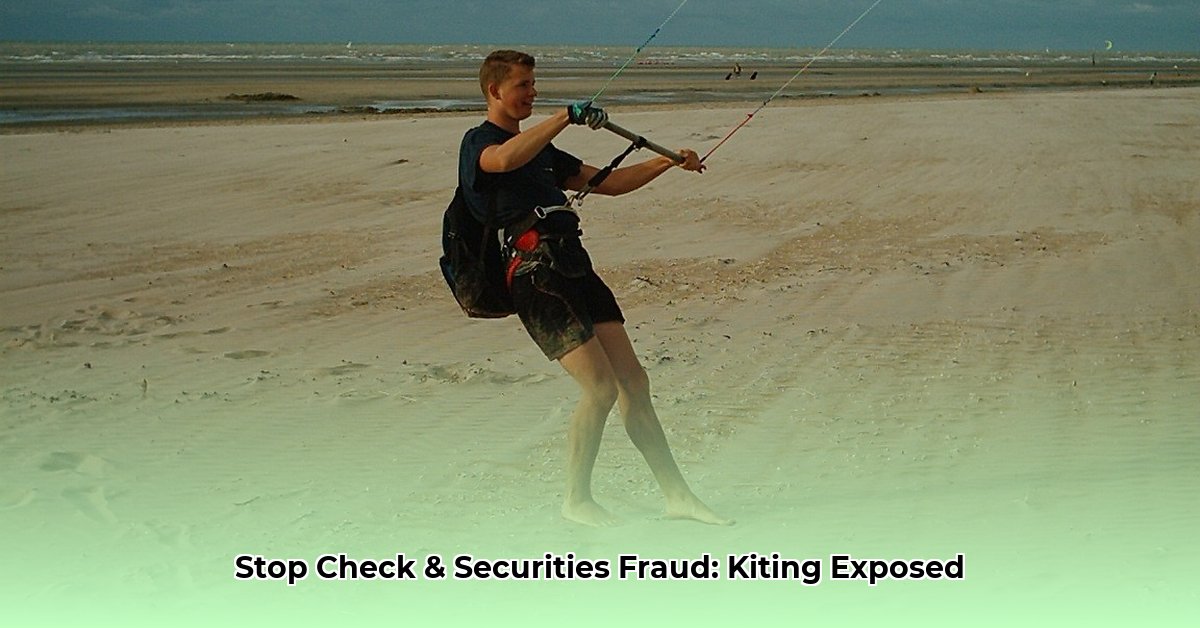Check kiting, sometimes called “check floating,” is a form of fraud that hinges on exploiting the time it takes for checks to clear. This article provides a comprehensive guide to understanding how kiting works, its various forms, detection methods, legal consequences, and prevention strategies.
Understanding the Mechanics of Kiting
Check kiting creates a deceptive picture of available funds by taking advantage of the delay between depositing a check and the funds actually becoming available. This “float” period allows the kiter to write checks against non-existent funds, essentially creating money out of thin air—at least temporarily.
How Kiting Works: A Step-by-Step Example
-
The Setup: A kiter opens accounts at multiple banks (Account A and Account B). Account A has a near-zero balance, while Account B has a small amount.
-
Creating the Illusion: A check for $1,000 is written from the near-empty Account A and deposited into Account B.
-
Exploiting the Float: Account B may show the $1,000 deposit before the check from Account A bounces. This delay is the kiter’s window of opportunity.
-
Cashing In: The kiter withdraws the $1,000 from Account B, spending money that doesn’t actually exist.
-
Advanced Kiting: More sophisticated schemes involve multiple accounts across several banks, creating a complex web of transactions to obscure the fraud.
Decoding the Different Types of Kiting
Kiting can manifest in several ways:
| Type of Kiting | Description |
|---|---|
| Circular Kiting | Cycling checks between two or more accounts to create a false impression of available funds. |
| Corporate Kiting | Manipulating company accounts to conceal losses, inflate earnings, or temporarily cover financial shortfalls. |
| Endless Kiting | Using a check from one bank with the routing number of a different bank to prevent the check from clearing. |
| Retail Kiting | Writing bad checks to retailers for more than the purchase price, receiving “cash back.” |
| Credit Card Kiting | Using one credit card to pay off another, exploiting grace periods. |
Detecting Kiting: Spotting the Red Flags
Detecting kiting requires vigilance and a keen eye for suspicious patterns:
| Red Flag | Description |
|---|---|
| Frequent Large Transactions | Unusually high volume of large deposits and withdrawals. |
| Inter-Account Transfers | Frequent movement of funds between the same accounts at different banks. |
| Short Balance Duration | Funds are deposited and quickly withdrawn, suggesting they aren’t meant to stay. |
| Multiple Accounts | Using several accounts at different banks to complicate tracking. |
| Sudden Activity Increase | A surge in transactions in a previously dormant account. |
Banks employ sophisticated software to detect unusual transaction patterns, while investigators use specialized tools to analyze the flow of funds and reconstruct account balances.
Legal Ramifications: The Price of Deception
Check kiting carries severe legal consequences, both at the federal and state levels.
-
Federal Penalties: Under 18 U.S. Code § 1344, kiting is considered bank fraud, punishable by fines up to $1,000,000 and imprisonment for up to 30 years.
-
State Laws: Individual state laws may also impose additional penalties, ranging from misdemeanors to felonies.
Even unintentional kiting can result in legal trouble. Banks have sophisticated detection systems, and prosecutors are adept at building cases. Beyond legal penalties, kiting severely damages credit ratings, impacting future financial opportunities.
Preventing Kiting: Protecting Your Finances
Preventing kiting requires proactive measures:
-
Meticulous Record-Keeping: Maintaining accurate records of all transactions is crucial.
-
Regular Account Reconciliation: Compare bank statements with personal records to identify discrepancies early.
-
Understanding Clearing Policies: Familiarize yourself with your bank’s check clearing policies.
-
Seeking Legitimate Financial Help: Explore legal options like overdraft protection or short-term loans instead of resorting to illegal activities.
Kiting in the Digital Age: Emerging Trends
The rise of digital currencies and faster payment systems presents new challenges and opportunities for kiting. While traditional check kiting may decrease, the underlying principle of exploiting delays could find new avenues in the digital realm. Researchers are actively studying these emerging trends to develop new detection and prevention methods.
Disclaimer
This article provides general information and is not legal or financial advice. Consult with a qualified professional for guidance on specific situations.
- Choosing the Right Generator with Water for Off-Grid Power - December 12, 2025
- Portable Water Turbines Generate Clean Electricity for Outdoor Living - December 10, 2025
- Micro Hydro Kit Delivers Renewable Energy to Your Home Grid - December 9, 2025
















